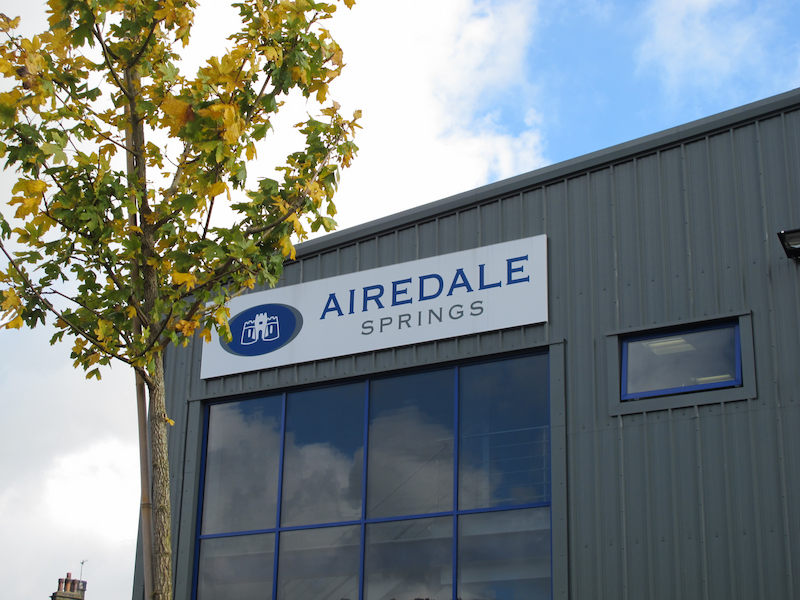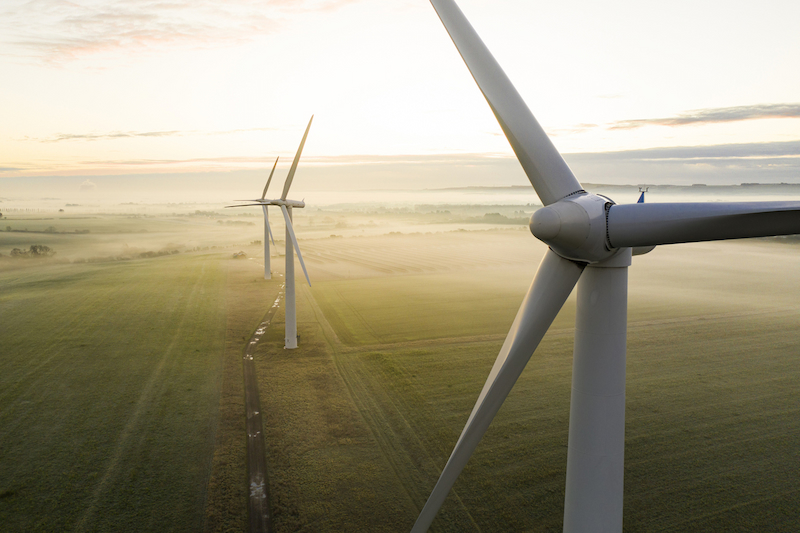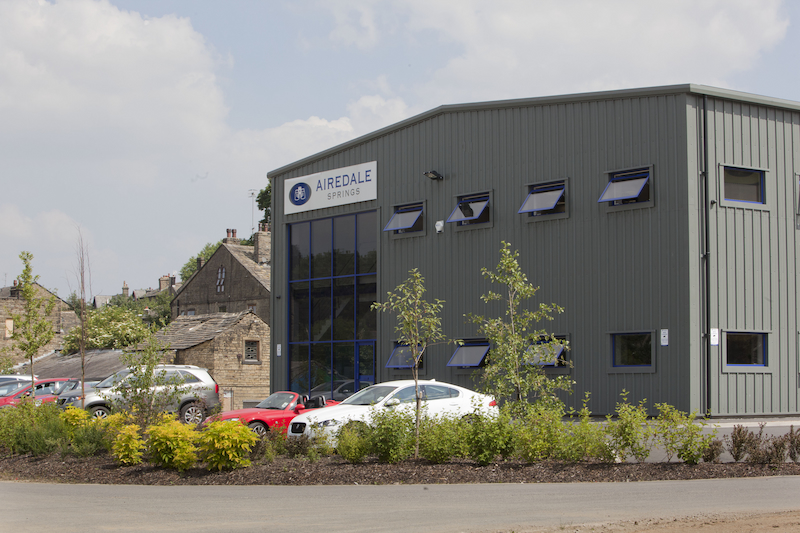Reducing industrial waste and the negative impact we have on our environment has become a top priority for governments, companies and individuals alike. As of 2022, 98% of manufacturers are aware of the UK government’s net zero by 2050 target. A significant number of companies have already taken steps to improve energy efficiency and assess how sustainable their business practices are. Over three-quarters of manufacturing businesses intend to have a net zero plan in place by the end of 2022, and 92% of manufacturers believe that with the right help and support, net zero by 2050 is achievable. That said, currently, only 20% of manufacturing companies are on track to achieve net zero.

So, how do we as an industry ensure that net zero by 2050 remains a viable target and rise to the challenge of green manufacturing? Green manufacturing is essential for businesses who want to establish environmentally friendly practices, exercise renewable production and encourage positive change within manufacturing processes. Today, we’re going to explore what green manufacturing is, the challenges it presents and how manufacturers like Airedale Springs can act to overcome those challenges.
COP26 & The Glasgow Pact
At the 2021 United Nations Climate Change Conference (COP26), the Glasgow Pact set out three primary goals for mitigating climate change:
- Revisit emission reduction plans from the 2015 Paris Agreement in 2022 and address any gaps in its implementation to ensure global warming is limited to 1.5oC
- A commitment to phase down the use of unabated coal
- A commitment to help finance climate efforts in developing countries
Alongside the agreed pact, the number of countries pledging to achieve net zero emissions passed 140. Over 100 countries committed to reversing deforestation by 2030. More than 40 countries pledged to move away from coal in electrical generation.
The Glasgow Pact was particularly momentous as it was the first time fossil fuels were explicitly included in a United Nations climate agreement.
What Does The Glasgow Pact Mean for Manufacturers?
If the UK is to reach its net zero target by 2050, it’s crucial that all businesses, no matter their industry, play their part and make moves to support the Race to Zero campaign. The Manufacturer’s organisation, Make UK, has set out a manufacturing roadmap to net zero. As a leading spring manufacturer and member of Make UK, Airedale Springs, along with many other British manufacturers, are working towards the following key commitments:
- Helping to establish four low-carbon industrial clusters by 2030, one zero-carbon cluster by 2040 in line with the UK Industrial Decarbonisation Strategy, and decarbonised mini-clusters at dispersed sites throughout the country
- Support suppliers and customers in their own net zero journey
- Offer net zero products
- Utilise carbon removal routes, whether that be nature-based or technology-led.
- Engage with the government and stakeholders to create the right business environment for net zero targets to remain achievable.

Tackling Emissions in The Manufacturing Sector
A large proportion of the roadmap to greener manufacturing and eventually, net zero is identifying where carbon is being emitted in unsustainable quantities in the manufacturing process. Only once you know where the issue is can you effectively reduce and offset the emissions.
There are three main sources of carbon emissions within manufacturing:
Value Chain Emissions – Upstream
These emissions are associated with the production and processing of raw materials. Production includes mining metals and minerals, hydrocarbon production, farming, and agricultural processes. Once produced, raw materials are processed, which can also produce emissions from processes like petrochemical production and metal forming. The manufacturers themselves do not necessarily cause these emissions, but the suppliers used to source raw material do.
Operational Emissions
Operation emissions are those processed by the manufacturing process, like spring assembly, for example. These emissions can come from fuel combustion or the use of electricity in the manufacturing process. Emissions associated with transporting and storing products are also included in operation emissions.
Value Chain Emissions – Downstream
The downstream value chain emissions are those associated with any electrical or fuel consumption by the end product (cars are a good example) or emissions related to the disposal of the end product. These could include the disposal route for the product (landfill or recycling), the material the product is made from and the product packaging.
Using the sector commitments outlined earlier, Make UK manufacturers’ goal is to reduce operational emissions by 67% by 2035 vs 2018. By 2050, we hope to have achieved net zero across the sector, with a 90% reduction in both upstream and downstream value chain emissions.
The Biggest Challenges in Decarbonising the Manufacturing Sector
Green manufacturing means decarbonising as many processes as possible within the targeted time frame. The hardest areas of manufacturing to decarbonise include:
- Fossil fuel intensive processes will need to switch to a renewable energy source
- The supply of raw materials will demand significant change to supply chains
- Transport and logistics will need to find greener ways of operating as new technologies become available
Other areas identified include electricity-intensive processes, fugitive emissions and packaging.
Manufacturers must balance addressing these issues with staying relevant and competitive. The costs of implementing green manufacturing processes must be considered. Working sustainably is very important, but it also has to work for the bottom line and be both ecologically and economically viable.
Finding Opportunity Within Challenge
Although the goal for the UK to be carbon neutral by 2050 is a challenging one, net zero presents huge opportunities for the manufacturing sector. Predominantly, it accelerates the development of new technologies, making achieving net zero more viable. These technologies include:
- Wind turbines for renewable energy on a larger scale
- Industrial digital technologies
- EV Batteries
- Nuclear reactors
- Green & Blue hydrogen
- Carbon capture, utilisation and storage
These new technologies will allow manufacturers to:
- Develop new, greener supply chains and resource efficiency
- Access finance from lenders, investors and grants to fund their green initiatives
- Improve processes efficiently and productively within the workplace
- Channel efforts into innovation and developing new, net zero products and services
Conditions for the Success of Green Manufacturing
Aside from manufacturers putting in the work, creating and sticking to their own net zero roadmaps, there are external factors that are conditions for success. The government must support investment and encourage low-carbon activities through a policy landscape conducive to green manufacturing. This includes:
- Access additional funding
- Mange carbon pricing and implement policies to prevent carbon leakage
- Rebalance gas and electricity prices to enable fuel switching and guarantee a reliable energy supply at a reasonable cost.
- Fill the skills and meet the demand for qualified workers
- Collaborate with the manufacturing industry to find the best solutions

Green Manufacturing at Airedale Springs
The road to net zero is challenging, but with the overwhelming majority of the manufacturing industry working towards a united goal, we think it’s achievable and are thrilled to be a part of it. Here at Airedale Springs, we’ve been developing our custom spring design processes for years and continuously invest in the company to ensure we’re operating as efficiently and sustainably as possible. Sustainability, recycling and energy efficiency are and always will be critical to our everyday operations. Contact us today if you want to know more about how we produce high-quality springs in a sustainable environment.

